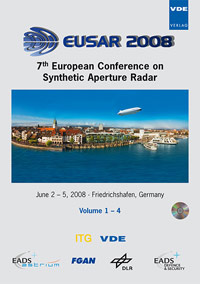New Results on Dynamic Instability of Antarctic Peninsula Glaciers detected by TerraSAR-X Ice Motion Analysis
Konferenz: EUSAR 2008 - 7th European Conference on Synthetic Aperture Radar
02.06.2008 - 05.06.2008 in Friedrichshafen, Germany
Tagungsband: EUSAR 2008
Seiten: 4Sprache: EnglischTyp: PDF
Persönliche VDE-Mitglieder erhalten auf diesen Artikel 10% Rabatt
Autoren:
Rott, Helmut (Institute for Meteorology and Geophysics, University of Innsbruck, Austria)
Eineder, Michael; Floricioiu, Dana (DLR IMF, Oberpfaffenhofen, Germany)
Nagler, Thomas (ENVEO IT GmbH, Innsbruck, Austria)
Inhalt:
The Larsen Ice Shelf on the eastern side of the Antarctic Peninsula has been subject to accelerating retreat due to climate warming since several decades, culminating in the collapse of the two northernmost sections, the Larsen- A ice shelf in 1995 and Larsen-B in 2002. Retreat and acceleration was observed for the glaciers above the previous Larsen-A ice shelf between 1995 and 1999 by means of ERS-1/ERS-2 tandem InSAR data. Because the signal over glaciers decorrelates rapidly, no InSAR analysis was possible later on. New opportunities for ice dynamic studies were opened up by TerraSAR-X. We applied image correlation techniques to mapping ice motion, using 11-day repeat pass data acquired in strip-map mode with about 3m resolution. Strong acceleration of the terminal parts of glaciers was observed since the ice shelf collapse, resulting in significant increase of export of grounded ice that contributes to sea level rise. These investigations demonstrate the unique opportunities of TerraSAR- X for studying flow dynamics of glaciers and ice streams. The high spatial resolution and short repeat observation capabilities enable detailed mapping of complex flow fields and their temporal variations.


